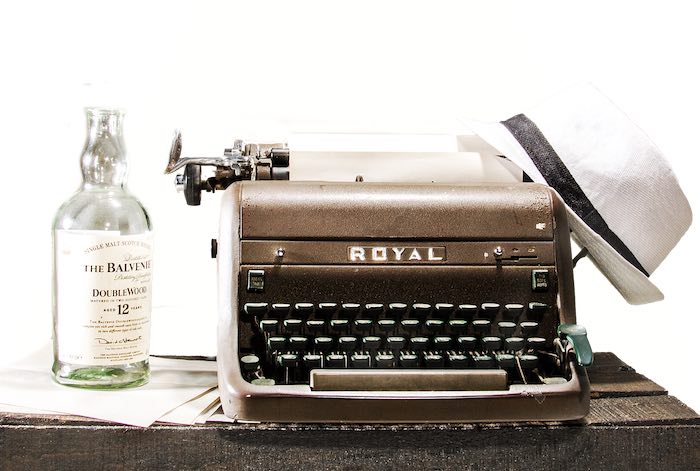Do-It-Yourself Audiobook Narration
While many well-known authors use popular audiobook narrators for their audiobooks, self-publishing authors often decide to narrate their own manuscripts. While this approach has pitfalls, with some quality equipment and trial and error, many technical problems can be avoided.

Many self-published authors are quite capable of narrating their own books. While audiobook narration can be difficult to adjust to, experimenting with tone and speed before trying to record for an audience can help create a good outcome.
However, if you’re paying for studio time, that experimentation can come at a high price.
It is possible, however, to use your own home as your recording studio.
First, you'll need a room with good acoustics. You don't want an echo from the room itself, or traffic noises coming from the outdoors.
You'll also need to have a computer that doesn't make a lot of noise. Generally, a laptop will be less noisy than a desktop; Apple products seem to have an advantage here as well.
A very good microphone is essential. Do not use the microphone built into your computer or webcam. Nor should you choose a microphone based on its sensitivity. Instead, you should choose a directional microphone - one that will record sound from in front of the microphone only. A cardoid polar pattern will also reduce unwanted sounds from the side and rear of the microphone.
You'll need a microphone stand, as handling the microphone during narration will produce unwanted noise, and you'll also want to pick up a pop filter or wind screen to reduce "plosives" - the unwanted breath pops that occur when speaking certain consonants into the microphone.
Unless you plan on running your audio through a mixer and amp before sending it to the computer, you can choose a microphone that plugs directly into the USB port of your computer.
Once your audio is recorded, you can fix small errors and improve sound quality with post-processing.
Don't expect perfect results the first time. It may take quite a lot of experimentation before you get a result you like. Even then, you should ask for feedback from others who know about audio recording.
A good place to look for advice on audio narration is Librivox. In fact, recording a chapter or two, or a few short stories for Librivox can be a good way to learn what works and what doesn’t when you’re narrating. The forums can help you learn how to improve your narration, as well as how to best clean up your audio files with software.
Most narrators on Librivox use the free and open source Audacity software. While it is free, there is a learning curve, so practicing with some public domain stories will help you feel comfortable with the process.
Read These Next
ISBN Frequently Asked Questions
For many first-time publishers and self-published authors, getting an ISBN and barcode on their books seems like an unimportant formality. It is, however, a vitally important part of your book publishing strategy that shouldn't be neglected.
Beginning and Ending Your Story
Elinor Glyn, in the early half of the 20th century, considered the "world’s greatest writer of love stories." Over the course of her writing career she published 31 novels and had 9 movies made from her work. She was criticized rather frequently by the literary press, as are many popular writers today. In 1922, The Author’s Press put out a four volume course written by Glyn on how to write novels, stories and screen plays. This is an excerpt from the second volume.
Walking on a Rainbow - How I Became a Children’s Book Author
The world of children’s book publishing is extremely competitive, to say the least. It takes hard work, dedication, perseverance and commitment to become a published author.







 Voiceover Narration: Creating Performances from the Inside Out
Voiceover Narration: Creating Performances from the Inside Out Storyteller: How to Be an Audio Book Narrator
Storyteller: How to Be an Audio Book Narrator How to Narrate Audiobooks: From Novice to Professional
How to Narrate Audiobooks: From Novice to Professional The Narrator's Guide to the Universe of Audiobooks: A 42-Page Guide to Get You Started in Audiobook Narration Without Falling on Your Face
The Narrator's Guide to the Universe of Audiobooks: A 42-Page Guide to Get You Started in Audiobook Narration Without Falling on Your Face Narrating Audiobooks: Everything You Need to Know to Get Started
Narrating Audiobooks: Everything You Need to Know to Get Started Dracula - Duet Narration
Dracula - Duet Narration A Beginner's Guide to Narrating Audiobooks
A Beginner's Guide to Narrating Audiobooks The Wonderful World of Audiobooks: 5-Step Starter Guide: How to Become an Audiobook Narrator & Earn Money from Home
The Wonderful World of Audiobooks: 5-Step Starter Guide: How to Become an Audiobook Narrator & Earn Money from Home The Italian
The Italian Audiobook Narration For Beginners
Audiobook Narration For Beginners